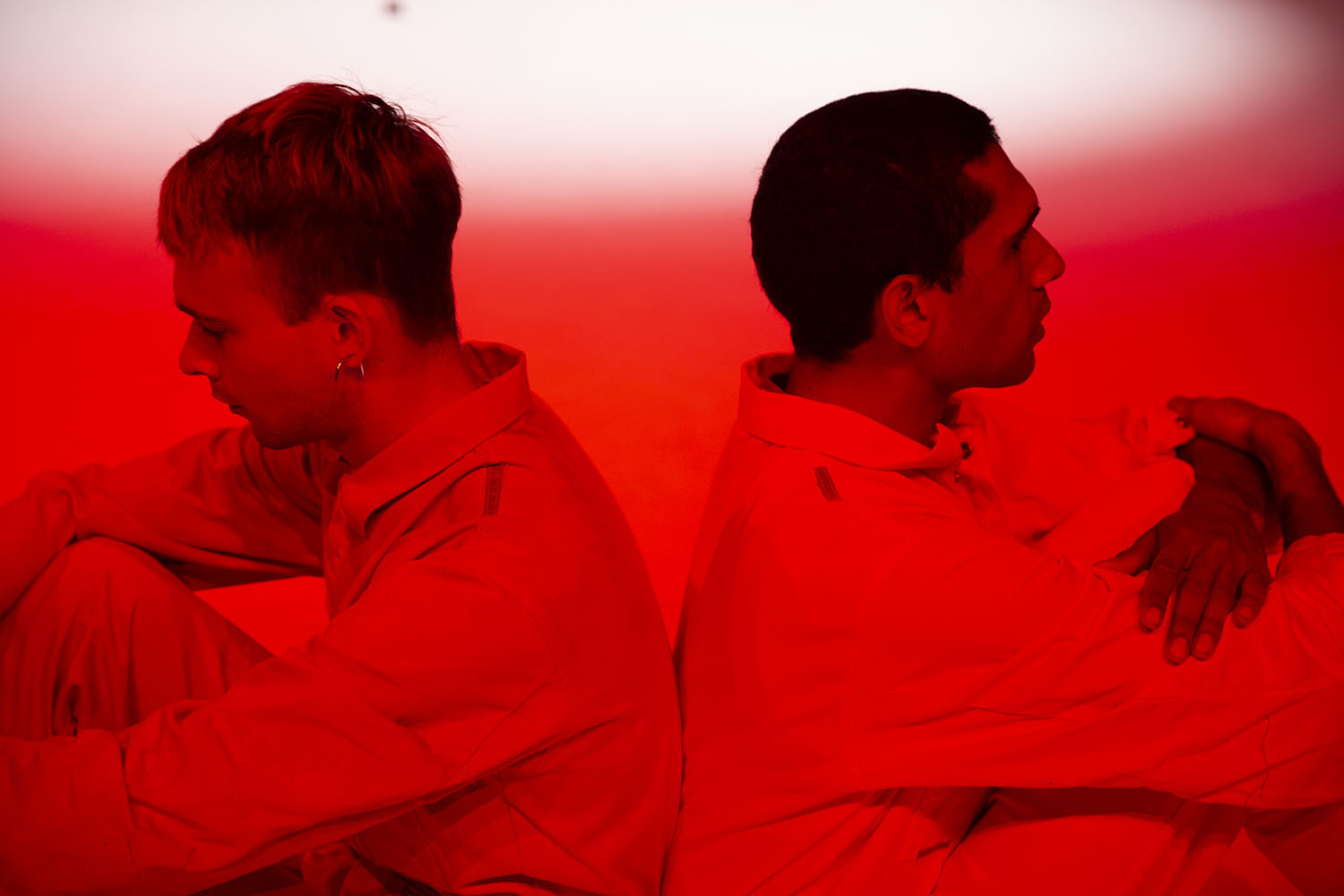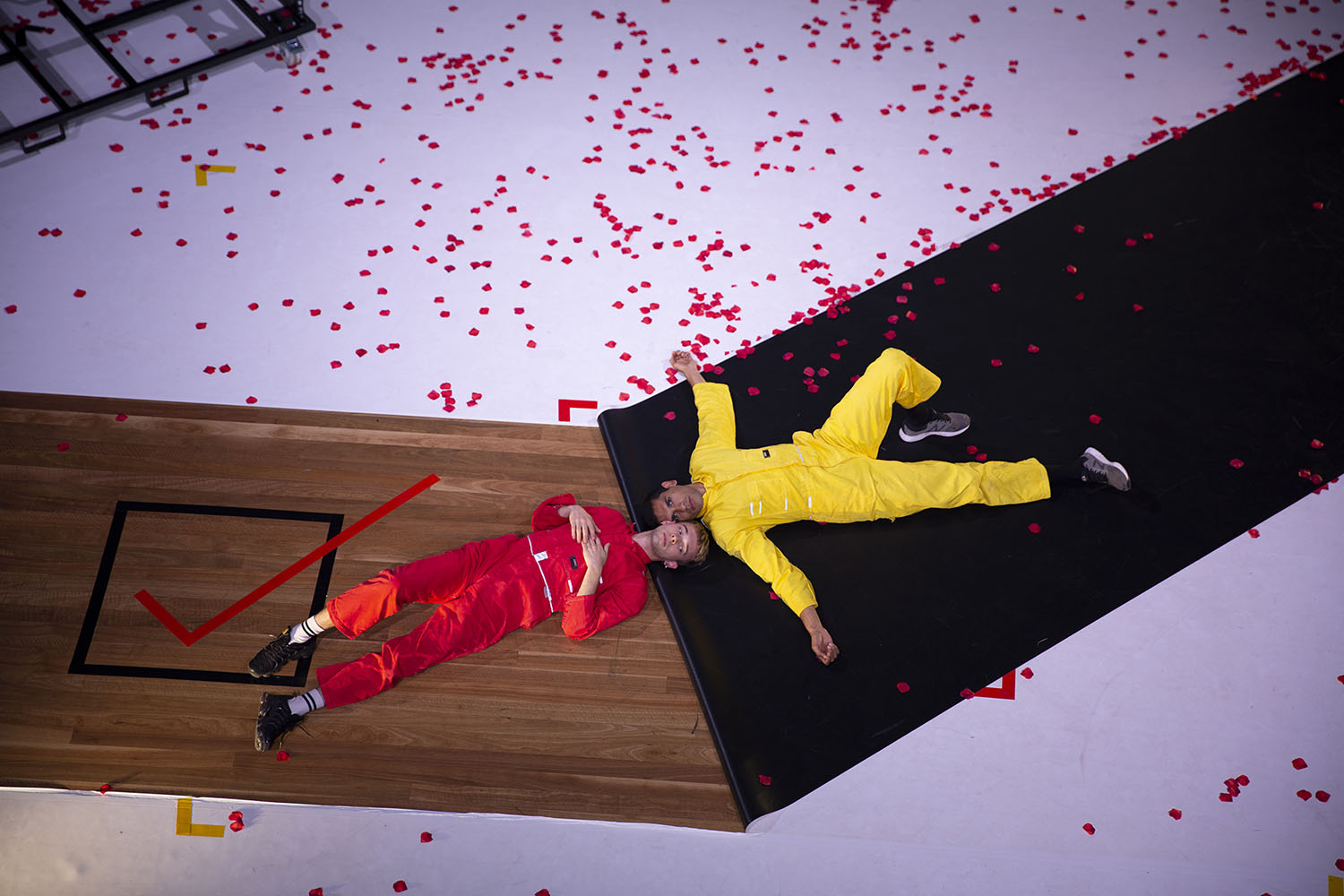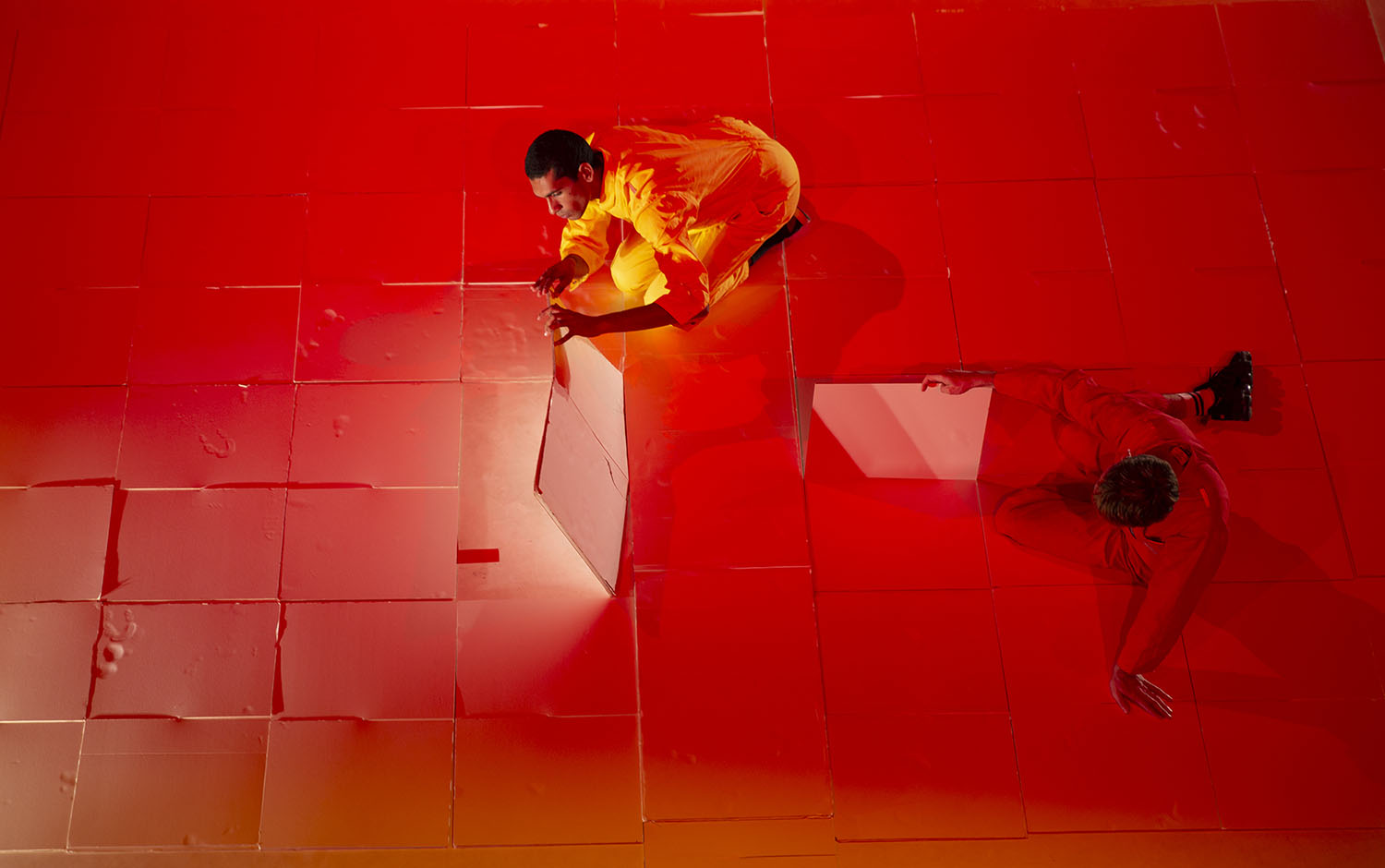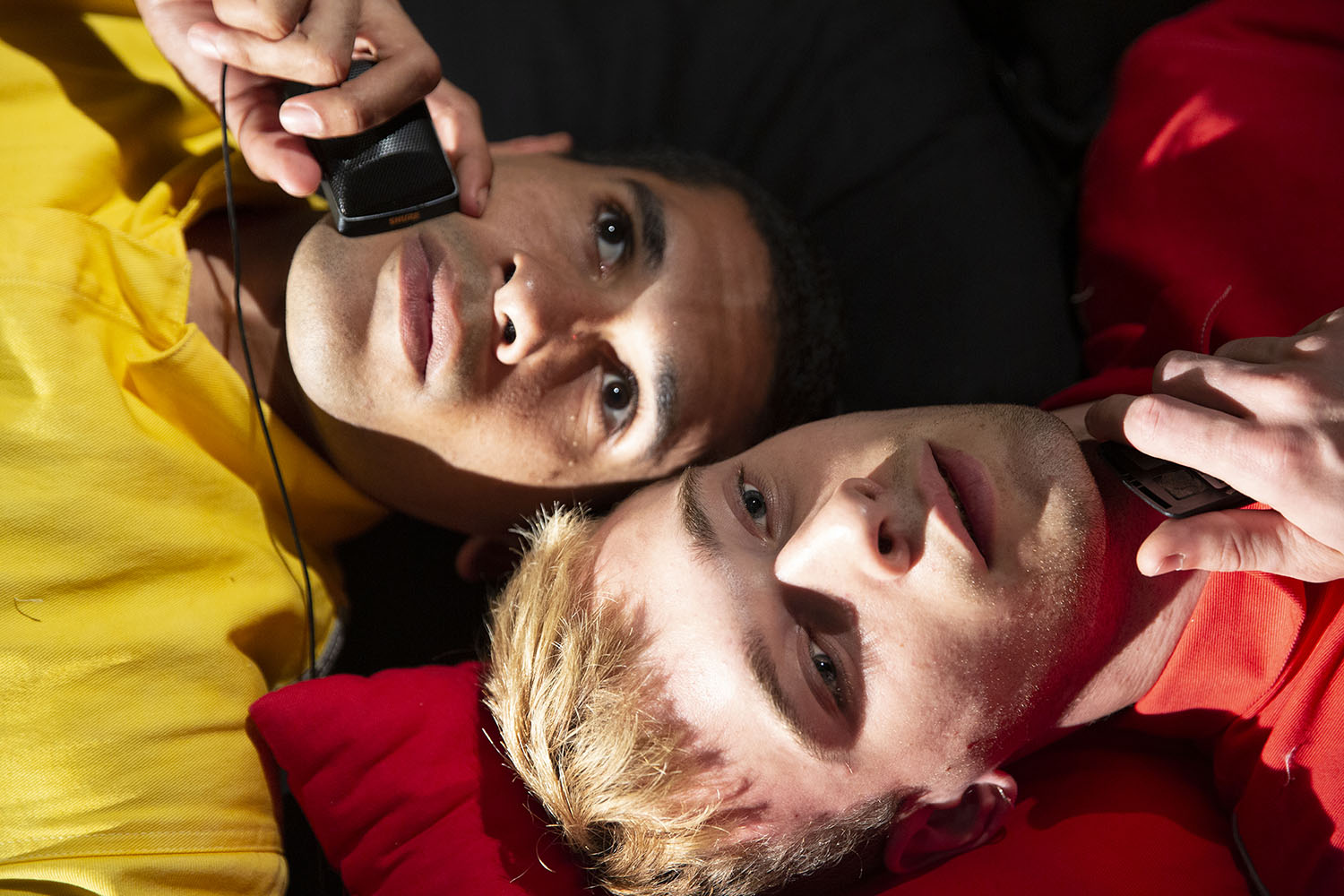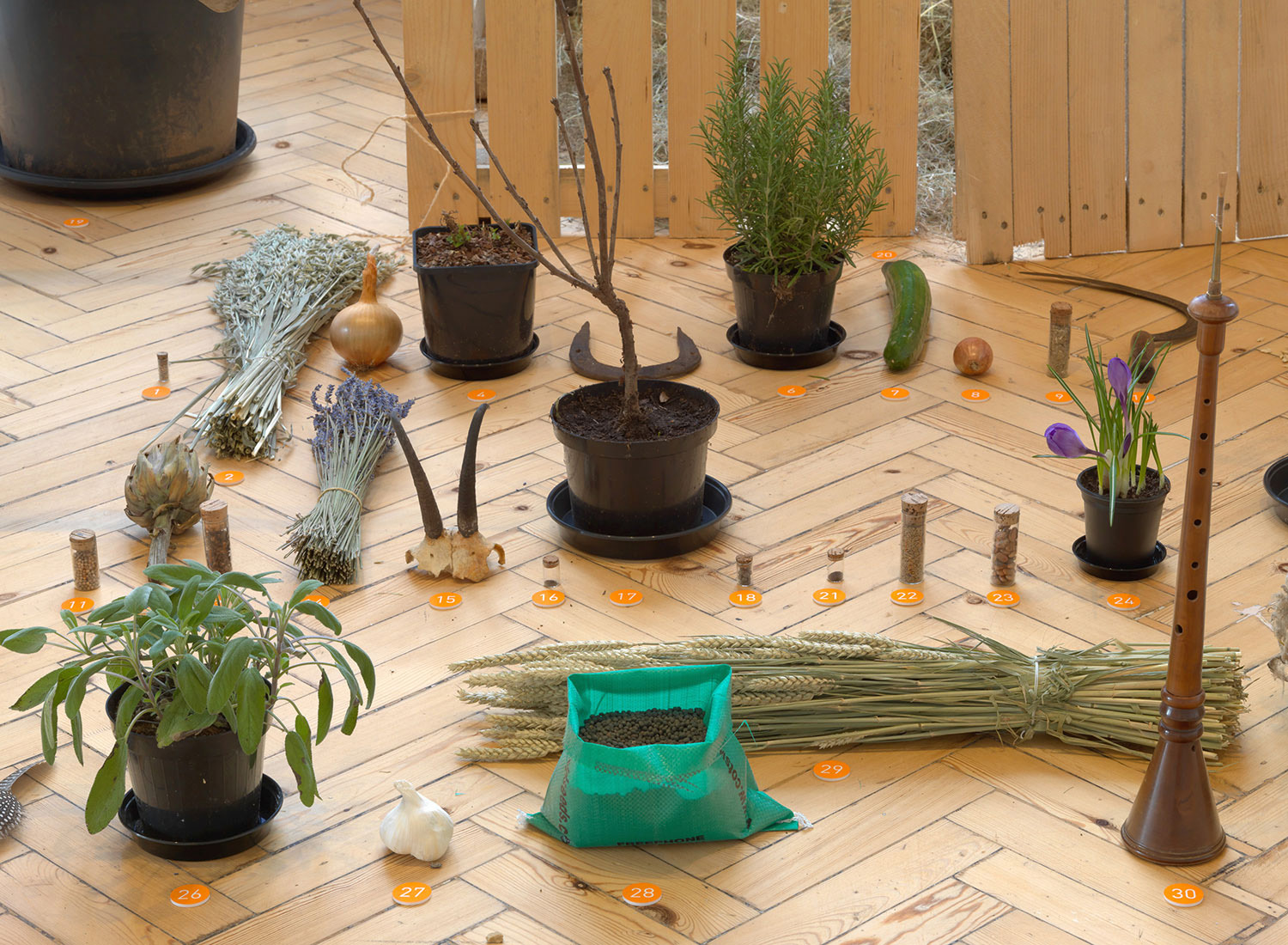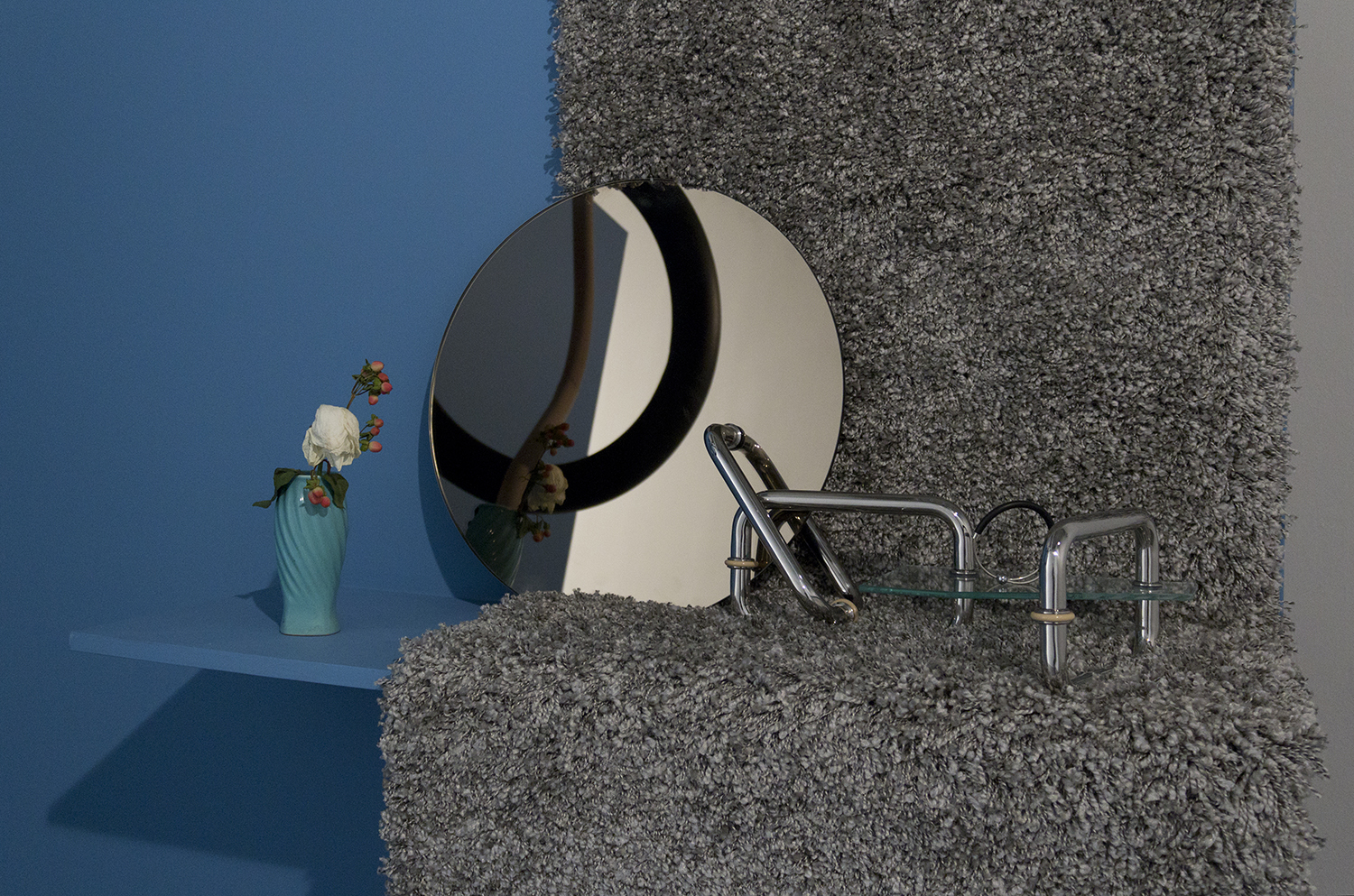Non Conventional Modes of Curating is a column focused on idiosyncrasies of the non conventional curatorial practices.
Hey, you up? WYD? Such phrases — generally unromantic lines cast out late at night, often denoting desperation — are all too familiar to those who frequent dating apps. They also feature prominently in a new performance work titled Flora4Flora, scripted by Enoch Mailangi, a Sydney-based Indigenous and Polynesian writer and text artist.
The piece is formulated as a conversation between two people — one a “native wattle,” the other an “introduced rose” (meaning Indigenous Australian and non-Indigenous) — arranging and engaging in a Grindr hookup. These roles are skillfully acted by Joseph Althouse and Gussy, respectively. The ensuing encounter is both comedic and poignant, with a strong script that is reinforced by the collaborative nature of the work. An Indigenous-led project, it was choreographed by dancer and artist Amrita Hepi, with a set designed by architectural studio Future Method (Joel Spring and Genevieve Zoe Murray). Flora4Flora was broadcast in real time on the Facebook page of the Campbelltown Arts Centre in May of this year. It was the fourth in a series held under the moniker “Real Real” — a sequence of performance-based works that use Facebook livestreaming as a primary viewing platform.
At 10 a.m. on May 3, 2019, a Facebook notification was sent out across the phones of those who have “liked” the page of the Campbelltown Arts Centre, notifying them that a live broadcast was about to begin. Campbelltown is a suburb about an hour southwest of the Sydney central business district; its art centre has been open for over three decades, during which time it has been host to a spate of art exhibitions and performances that would otherwise be more likely to occur in the inner city — which is to say that art that is cool, interesting, or “contemporary” is not typically associated with suburban areas. On a superficial and practical level, it is hugely convenient that physical presence is not required to view Flora4Flora. I watched it from my iPhone while eating a piece of toast and getting ready for work. This might sound like a somewhat detached or insular experience, and it could be argued that some sense of community or connectivity is lost without face-to-face interaction. In truth, however, the livestream feels close enough to the physical experience of being at an art event. Facebook informs you which of your friends are also tuned in — most of whom are the usual suspects who you would catch at such an event — and their comments and reactions appear in real time in response to specific movements, pieces of dialogue, and soundscapes. A flurry of heart and thumbs-up emojis peppered the screen, forming a kind of digital echo chamber of affirmation. It was heartening to observe, and a testament to both the strength of the performance and to the connections that all three collaborators maintain within the wider Sydney community.
Text is central to Flora4Flora, and much of the originality and excellence of the work is derived from the authenticity of Mailangi’s script. It is divided into five acts, not dissimilar to the structure of a traditional theatrical play. Dialogue is both spoken by the two performers and typed across the screen, often to the beat of a disconcerting, throbbing club-like soundtrack provided by the Sydney DJ Jikoroux. The onscreen text shifts rapidly throughout all five acts: often it is conversational (“I’m watching from Perth”); sometimes it is a pastiche of internet memes and tweets (“BDE” or “I’d like to meet my horniest ancestors”) or references and observations pertaining to current events and pop culture (“Fire in Paris,” “A Star is Born felt like 8 Mile but straight”). It is a conscious remixing of the zeitgeist that the work’s choreography seamlessly mirrors, utilizing dance moves like flossing or dabbing that have been plucked from modern internet and meme culture. This is intermixed with Hepi’s usual style of choreography. The movements are graceful and flowing, and alternate between being disjointed yet at the same time incredibly tender. Prior to Flora4Flora, Hepi was recently included in an exhibition titled “The National” at the Art Gallery of New South Wales, a survey of contemporary Australian art held across Sydney’s three major gallery institutions.
Indigeneity is embedded within the entirety of Flora4Flora, perhaps unsurprising given that all three collaborators are themselves Indigenous Australians. Thematically, this is crucial to the work, and becomes significant most particularly in regard to an interrogation of structures. Queerness is a structure, the internet is a structure, and whiteness is a structure; how do these interact and manifest? How are they used to oppress Indigenous sovereignty? Or can they assist this? The dismantling of structure is explicitly visualized within the performance, most notably through an ephemeral set of soft sculptures built by Future Method. These are constructed and reconstructed by the performers as the piece moves through its five acts. A distinct sense of tension between order and chaos is often felt. At one point bright red confetti falls from the ceiling onto a pristine white floor; one performer tries frantically to sweep this up into a neat pile, while the other blows it away with a leaf blower. A digital framing device is recurrent also: screen borders consciously draw the viewer’s attention to the fact that they are viewing this all through a screen, on Facebook, on the internet — adding to the self-referential nature of the piece.
The very act of tuning in to a livestream to view a work about structures and Indigeneity feels subversive or contradictory at times, something that was noted by Hepi in a Q&A directly following the performance. In recent history, livestream technology has gained notoriety due to more nefarious uses, for example the alt-right-affiliated Christchurch mosque shootings in March of this year. This contradiction provides an interesting conceptual thread: Flora4Flora is a deliberate and thought-provoking interrogation of the potential for such structures to be repurposed in a postcolonial context. This is where the work becomes more poignant and serious; yet humor is always intertwined with this seriousness. A line of Mailangi’s flashes on screen at one point during the performance: “Hate my life… But that’s all right. We have fun.”

